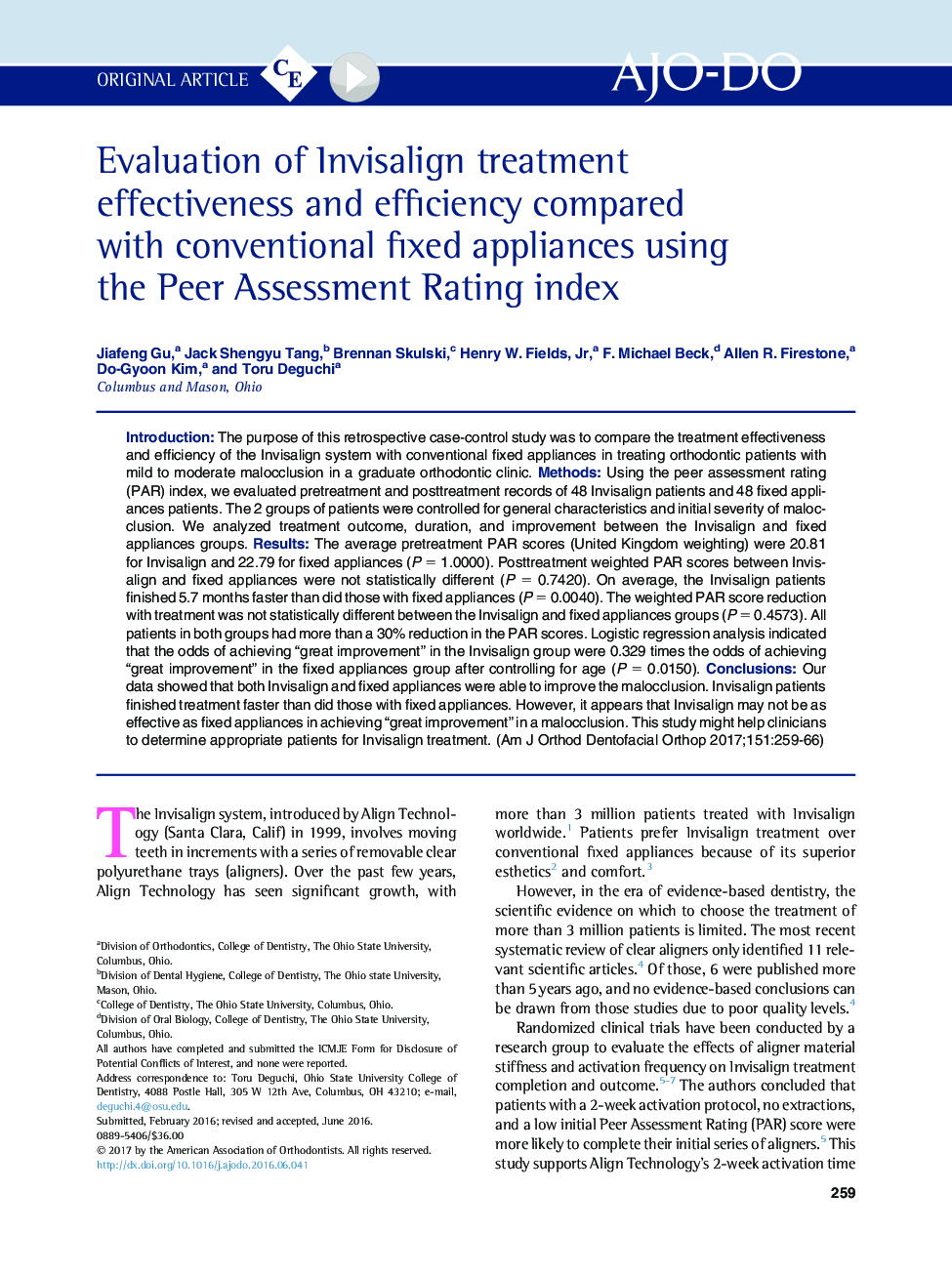| Article ID | Journal | Published Year | Pages | File Type |
|---|---|---|---|---|
| 5637560 | American Journal of Orthodontics and Dentofacial Orthopedics | 2017 | 8 Pages |
â¢Both Invisalign and fixed appliances improved mild to moderate nonextraction patients.â¢Invisalign finished treatment faster than fixed appliances.â¢Fixed appliances improved malocclusion more effectively than Invisalign.
IntroductionThe purpose of this retrospective case-control study was to compare the treatment effectiveness and efficiency of the Invisalign system with conventional fixed appliances in treating orthodontic patients with mild to moderate malocclusion in a graduate orthodontic clinic.MethodsUsing the peer assessment rating (PAR) index, we evaluated pretreatment and posttreatment records of 48 Invisalign patients and 48 fixed appliances patients. The 2 groups of patients were controlled for general characteristics and initial severity of malocclusion. We analyzed treatment outcome, duration, and improvement between the Invisalign and fixed appliances groups.ResultsThe average pretreatment PAR scores (United Kingdom weighting) were 20.81 for Invisalign and 22.79 for fixed appliances (PÂ =Â 1.0000). Posttreatment weighted PAR scores between Invisalign and fixed appliances were not statistically different (PÂ =Â 0.7420). On average, the Invisalign patients finished 5.7Â months faster than did those with fixed appliances (PÂ =Â 0.0040). The weighted PAR score reduction with treatment was not statistically different between the Invisalign and fixed appliances groups (PÂ =Â 0.4573). All patients in both groups had more than a 30% reduction in the PAR scores. Logistic regression analysis indicated that the odds of achieving “great improvement” in the Invisalign group were 0.329 times the odds of achieving “great improvement” in the fixed appliances group after controlling for age (PÂ =Â 0.0150).ConclusionsOur data showed that both Invisalign and fixed appliances were able to improve the malocclusion. Invisalign patients finished treatment faster than did those with fixed appliances. However, it appears that Invisalign may not be as effective as fixed appliances in achieving “great improvement” in a malocclusion. This study might help clinicians to determine appropriate patients for Invisalign treatment.
